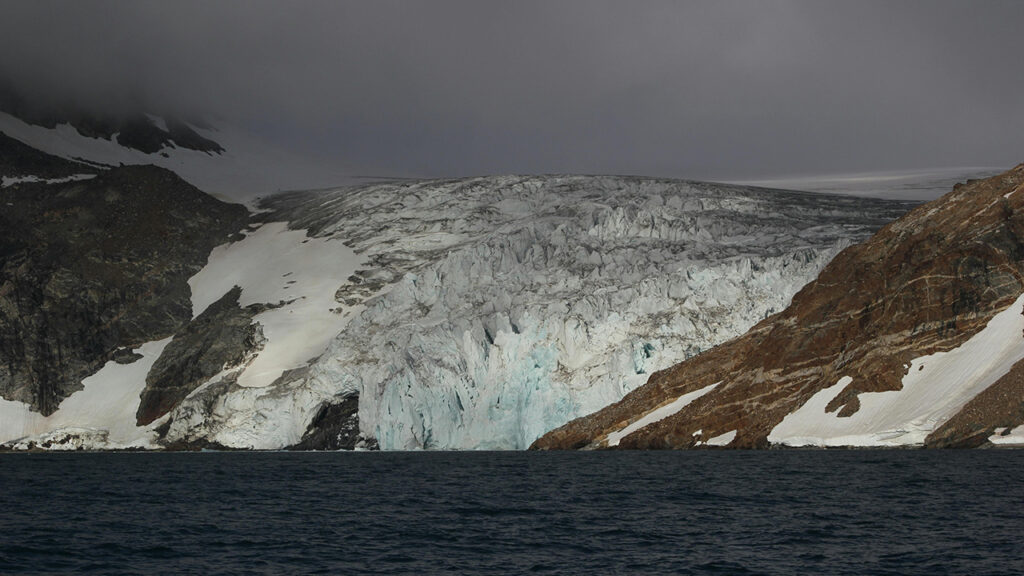
Advancing climate models to assess risk from climate tipping points
Climate scientists are working to improve models that will pinpoint how and where major climate tipping points might occur, helping us prepare for the potentially irreversible changes that could reshape our world.
What are climate tipping points and why do they matter?
Greenhouse gas emissions are warming the climate, and year on year we witness records broken across global temperatures, sea surface temperatures and acidification, sea level rise, ice sheet extent, and glacier retreat.
Some changes are happening gradually, but other changes can reach a so-called “tipping point”, where rapid and abrupt changes are irreversible on societal timescales.
Scientists are especially concerned about two major tipping points: the rapid melting of the Greenland Ice Sheet and the collapse of the North Atlantic subpolar gyre – circulating ocean water that loops past Greenland. Both could lead to huge disruptions worldwide, such as drastic weather changes in Europe and rising sea levels globally.
Because the Greenland Ice Sheet and North Atlantic subpolar gyre are geographically close – and connected through an exchange of heat and freshwater between the ocean, ice, and air – researchers recognise that interactions between these two tipping points are possible.
There is growing concern that these tipping points may be imminent, but up until now there’s been a large amount of unknowns – which major climate tipping points will occur and when? That’s where the PROMOTE (Progressing Earth System Modelling for Tipping Point Early Warning Systems) project comes in.
Climate tipping points could occur when global warming triggers rapid shifts in crucial parts of the Earth system. While scientists know some of these tipping points are plausible, we don’t know well enough how likely it is to cross these tipping points and what the consequences would be. One challenge is that even our best current climate models struggle to represent the complex processes that govern tipping behaviour.
Dr Reinhard Schiemann, climate researcher at the National Centre for Atmospheric Science, University of Reading, and the lead scientist for the PROMOTE project.
How are scientists using next-generation models to understand climate tipping points?
Over the next 5 years, climate scientists will create a new generation of Earth System models to generate simulations of plausible tipping points, and provide recommendations for targeted observational networks – through a new project known as PROMOTE.
“We’re developing more powerful computer models that can better simulate how our climate works so they can pinpoint when and where major climate tipping points might occur,” explains Dr Reinhard Schiemann.
Making climate models fit-for-purpose is no easy feat, and will involve targeted developments improving the representation of ice sheets and freshwater export from the ice sheets into the ocean, as well as ocean eddies and mixing of water masses. An increase in the ocean and atmosphere model resolution will help to better model the interactions between the ocean, atmosphere, and ice on land and sea, and the wider consequences of crossing tipping points for Europe and other regions.
“The model developments in PROMOTE will enhance the capabilities of the UK’s Earth System Model (UKESM). UKESM is already world-leading in that it has dynamic land ice sheets and PROMOTE will leverage this capability to better represent interactions in the coupled ocean-ice-atmosphere system,” says Professor Colin Jones, lead UKESM scientist at the National Centre for Atmospheric Science and Met Office.
All of this will support scientists and decision-makers in businesses, government, and civil society to assess the risk and prepare for the consequences of crossing climate tipping points.
By bringing together 7 UK research institutions, the PROMOTE project will become part of a wider effort to develop early warnings of climate change impacts – and reinforce action to mitigate climate warming.
Further information
The NCAS-led PROMOTE project has been funded, subject to final contract negotiation, by the Advanced Research + Invention Agency, better known as ARIA, which is sponsored by the UK’s Department for Science, Innovation, and Technology.
Co-led by Programme Directors Gemma Bale and Sarah Bohndiek, ARIA’s Forecasting Tipping Points programme looks to create an early warning system capable of equipping us with the information, understanding and time we need to accelerate proactive climate adaptation and mitigation.
Backed by £81m over five years, the programme will unite 27 international teams in a collaborative effort to detect the earliest signs of climate tipping points.
For ARIA media enquiries, message press@aria.org.uk.
